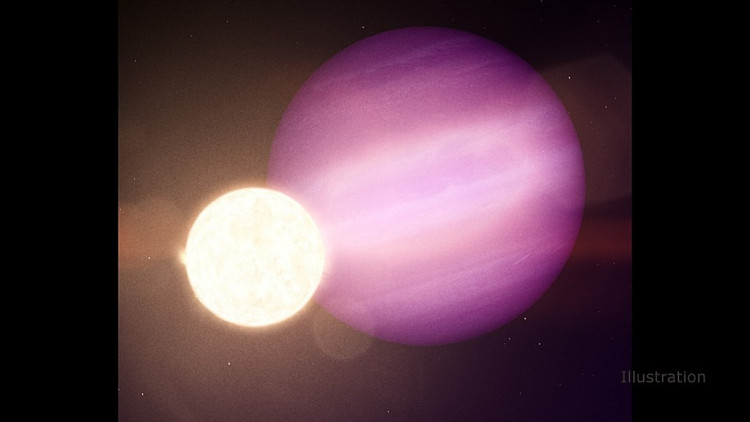Researchers for the first time have detected various forms of carbon in the atmosphere of an exoplanet designated TYC 8998-760-1 b.
Its discovery with the European Southern Observatory's Very Large Telescope in Chile revealed a relatively high proportion of carbon-13, implying that the exoplanet formed at a great distance from its parent star.
The discovery, according to the researchers, provides a new perspective on the poorly understood process of planet formation.
"It is really quite special that we can measure this in an exoplanet atmosphere, at such a large distance," astronomer Yapeng Zhang of Leiden University in the Netherlands said.
The discovery of TYC 8998-760-1 b in 2019 was already noteworthy. It is one of a very small number of exoplanets that we have been able to image directly.
Planets are incredibly dim in contrast to stars, therefore we normally identify them by measuring the influence they have on their host star, either gravitationally or by minutely darkening the star's light when they pass in front of it.
These strategies are most effective for planets that are close to their stars, however, TYC 8998-760-1 b orbits its star at a considerable distance - approximately 160 astronomical units. To put this in context, Pluto orbits the Sun at a distance of 40 astronomical units.
The researchers anticipated a certain amount of carbon on TYC 8998-760-1 b. But the amount of carbon-13 detected in the exoplanet's atmosphere was twice as abundant as expected. The team believes that this can provide insight into the conditions that led to the formation of TYC 8998-760-1 b.
The discovery of isotopes in atmospheres will not be viable for many exoplanets for the time being, but as telescopes improve, it may provide a new technique of understanding exoplanet formation, according to the researchers.
"The expectation is that in the future, isotopes will further help to understand exactly how, where and when planets form," astronomer Ignas Snellen of Leiden University said. "This result is just the beginning."
The research has been published in Nature.




